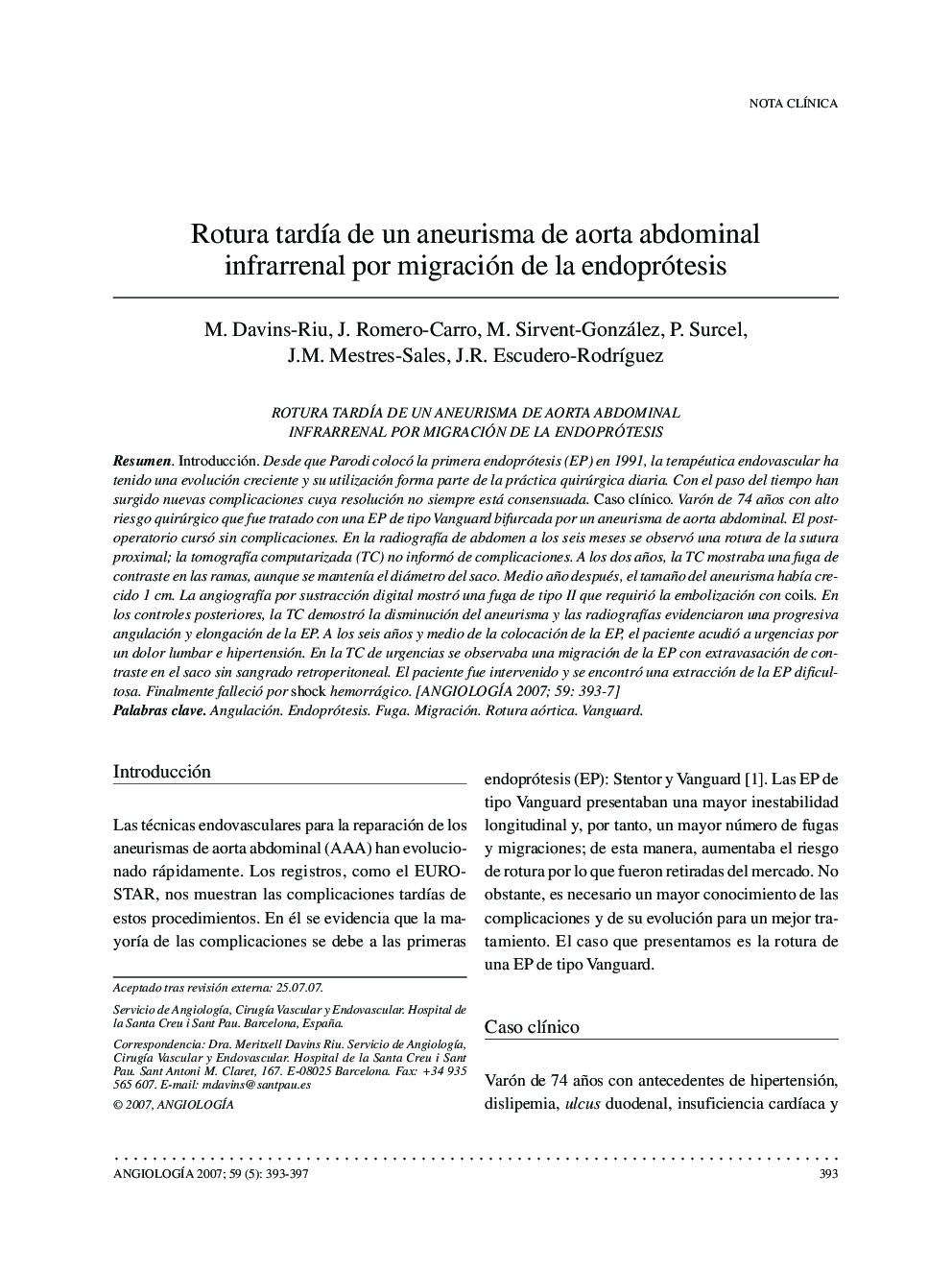| Article ID | Journal | Published Year | Pages | File Type |
|---|---|---|---|---|
| 2868093 | Angiología | 2007 | 5 Pages |
Abstract
Our study involved the case of a 74-years-old male with a high surgical risk who was treated for an abdominal aortic aneurysm by means of a bifurcated Vanguard-type stent. No complications occurred during the post-operative period. An X-ray of the abdomen taken at six months revealed breakage of the proximal suture; a computerised tomography (CT) scan did not show any complications. At two years, the CT showed a contrast leak in the branches, although the diameter of the sac was preserved. Half a year later, the aneurysm had grown 1Â cm. Digital subtraction angiography showed a type II leak that required coil embolisation. In later revisions, the CT scan showed that the aneurysm had got smaller and x-rays evidenced a progressive kinking and lengthening of the stent. Six and a half years after placement of the stent, the patient visited the emergency department because of lower back pain and high blood pressure. The emergency CT scan revealed migration of the stent with contrast extravasation in the sac and no retroperitoneal bleeding. The patient was submitted to a surgical intervention and extraction of the stent was found to be a complicated procedure. The patient finally died due to haemorrhagic shock.
Keywords
Related Topics
Health Sciences
Medicine and Dentistry
Cardiology and Cardiovascular Medicine
Authors
M. Davins-Riu, J. Romero-Carro, M. Sirvent-González, P. Surcel, J.M. Mestres-Sales, J.R. Escudero-RodrÃguez,
